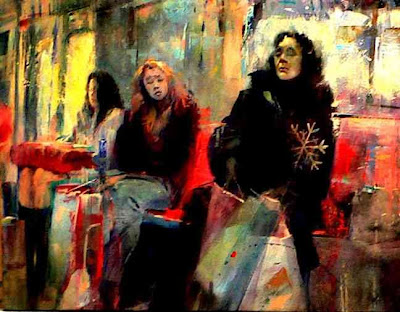Blake Gopnik at his best
We all know a few things about Blake Gopnik, the Washington Post's Chief Art Critic:
- He doesn't like painting.
- He especially doesn't like representational painting.
- He very, very rarely reviews his hometown's art galleries, and focuses his reviews on museums all over the nation, biennials, etc.
- Some of his fellow newspaper critics don't think much of him.
But the Anglocentric, Oxford-educated Gopnik is also sharply equipped to skewer, debone and consume his visual art victims when he wants to make a point, and is especially effective when he has a valid one.
And Blake Gopnik makes a very valid point in "The Overripe Fruit of John Alexander's Labors," his current review of the John Alexander retrospective at the Smithsonian American Art Museum (the show will then go on to the Museum of Fine Arts in Houston - remember that).
After decimating Alexander's paintings during the first few lethal word descriptions of some of the work at the exhibition, and after re-channeling some often repeated Gopnikisms about painting and the tired "someone has already done this," or the "masters did it better," blah, blah, blah, Gopnik delivers a superbly clear message about one of the cornerstones of art throughout the ages: it's not just talent that gets ya there, it's also who you know! Gopnik executes the show when towards the end of the review, in discussing Alexander he writes:
I'd place him somewhere up there among the 5,000 or so best artists in the country. Which is more than enough to justify his continuing to paint and collectors' continuing to buy him. What I don't understand is why our national art museum, with such limited exhibition slots and an already iffy reputation for its contemporary programming, would want to highlight such a secondary figure. Alexander has barely had a significant museum show since the early 1980s, when his good friend Jane Livingston first displayed him at the Corcoran, where she was a talented chief curator. Livingston, now working freelance, also organized this show; her boss at the Corcoran, and again for the current survey, was Peter Marzio, now director of the Museum of Fine Arts in Houston.Bravo Mr. Gopnik!
By curating Alexander into our national museum, Livingston is billing him as one of our next Gilbert Stuarts, Edward Hoppers, Jackson Pollocks or Jenny Holzers. That's more than his modest talent can bear.
Read the whole review here.









